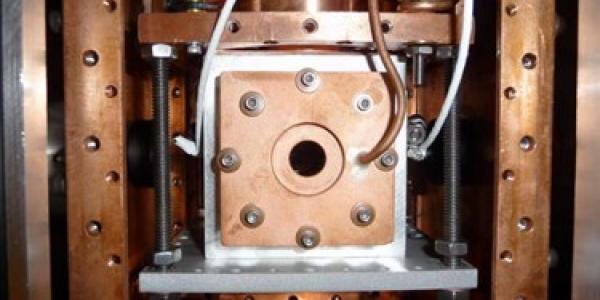
JILA instrument that uses a frequency comb to detect large, complex moleculesbased on the precise frequencies, or colors, of light they absorb. Themolecules are chilled and probed inside this chamber at temperatures nearabsolute zero. Credit: Spaun/JILA
The advance, described in a Nature paper published online May 4, was made possible by a cooling method developed by Harvard University ers, who co-authored the study. The JILA-Harvard work boosts the might of spectroscopy, the study of interactions between matter and light, which informs many fields, such as chemistry, physics, astronomy, imaging and remote sensing.

